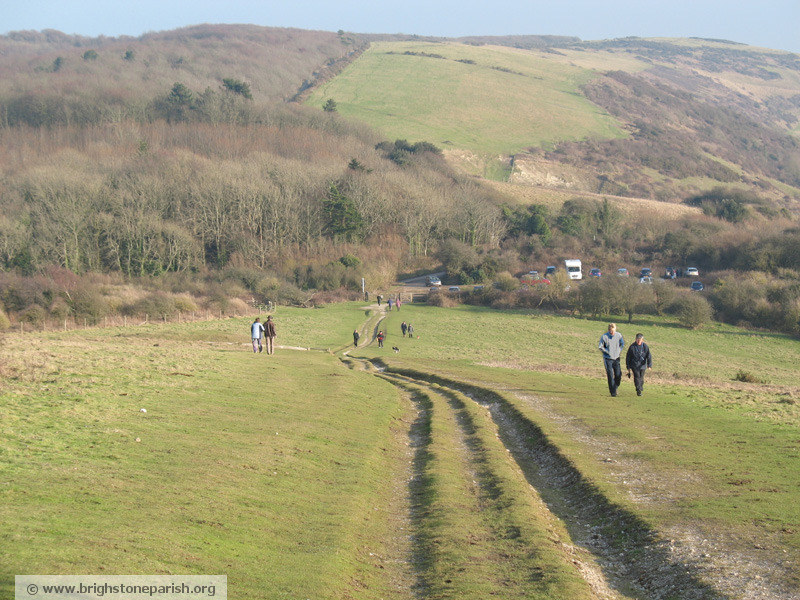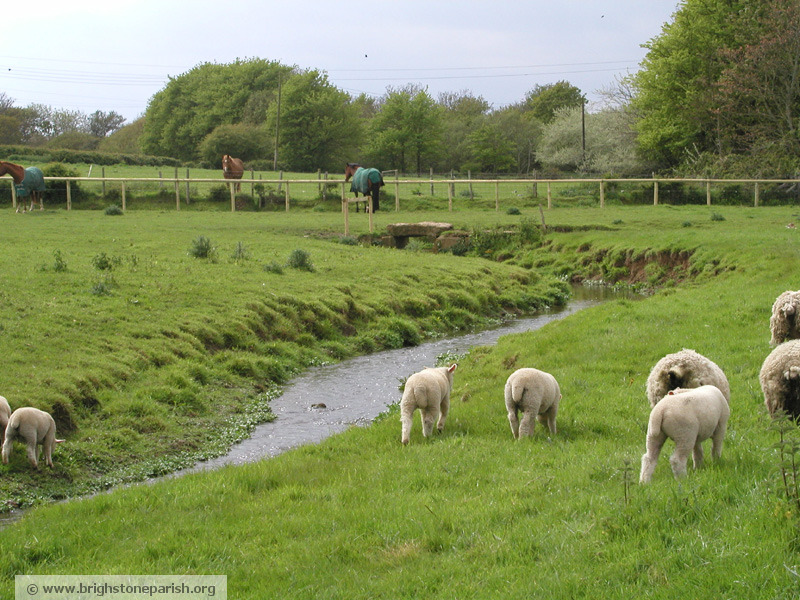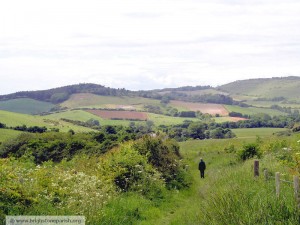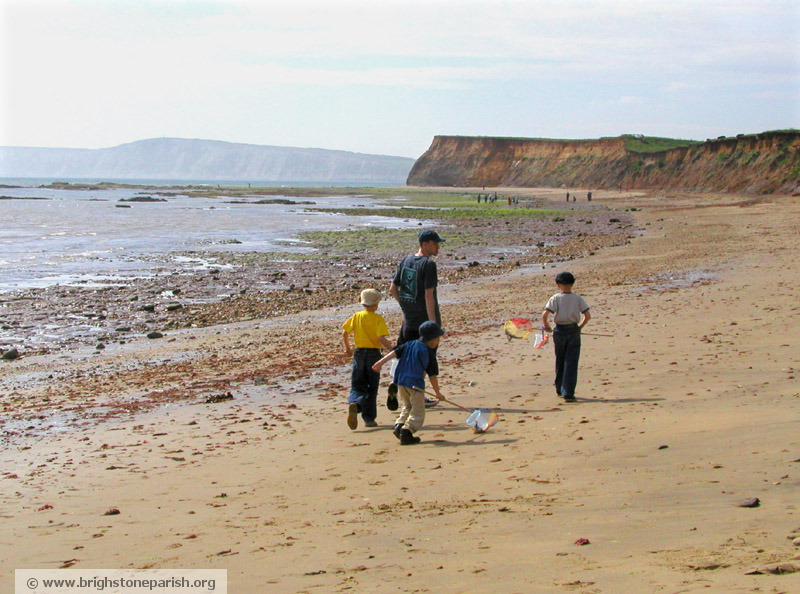Things To Do
Regardless of whether you are a resident or a visitor to the Brighstone area, there is little shortage of “things to do” here.
The shops, public houses and restaurant are always busy while the churches, library and museum are all well used. The many societies and clubs in the area cater for a wide range of interests and many of them invite visitors to share in their activities.
When you have finished exploring the historic villages and hamlets it will be time to go out into the surrounding countryside, admire the landscape and seek out the wildlife and rich flora.
 The high chalk landscape of Brook, Mottistone, Brighstone and Limerstone Downs forms part of the spine of the Isle of Wight and separates Brighstone Parish from the rest of the Island, making it a very special place. The most popular walk in the area is the Tennyson Trail which runs along the chalk ridge. It is the ideal place for an afternoon walk and provides wonderful views over the entire area. The National Trust car park on Mottistone Down is is a good starting point and also allows access to paths through the woodland and forests to the north of the Tennyson Trail. Limerstone Down is a popular site for paragliding and even in the depths of winter, enthusiasts can frequently be seen hanging in the air over this attractive landscape.
The high chalk landscape of Brook, Mottistone, Brighstone and Limerstone Downs forms part of the spine of the Isle of Wight and separates Brighstone Parish from the rest of the Island, making it a very special place. The most popular walk in the area is the Tennyson Trail which runs along the chalk ridge. It is the ideal place for an afternoon walk and provides wonderful views over the entire area. The National Trust car park on Mottistone Down is is a good starting point and also allows access to paths through the woodland and forests to the north of the Tennyson Trail. Limerstone Down is a popular site for paragliding and even in the depths of winter, enthusiasts can frequently be seen hanging in the air over this attractive landscape.
At the foot of the chalk escarpment is a sandier, softer, landscape whose sheltered footpaths are more suited to those who enjoy solitude uninterrupted save for the sound of wildlife. From here, the land rises again to the sandy heathlands of Mottistone Common, Grammar’s Common and Row Down which overlook the villages.
 To the south of the villages we enter a gentle clay landscape criss-crossed by hidden lanes and footpaths and enchanting streams. It is well worth exploring on foot or by bicycle. There are large old farmhouses here in a land of mixed farming.
To the south of the villages we enter a gentle clay landscape criss-crossed by hidden lanes and footpaths and enchanting streams. It is well worth exploring on foot or by bicycle. There are large old farmhouses here in a land of mixed farming.
Many people come to the Isle of Wight to enjoy the coast and the sea. Brighstone will not disappoint them. The red clay fields extend right up to the cliff edge which overlooks about seven kilometres of mainly sandy beach . The cliffs themselves are soft and rather unstable, so climbing them or even approaching too close to the cliff edge is not advised. The A3055 “Military Road” , which follows the coast-line, links the various paths and steps accessing the beaches. The easiest of these is at Brook where there is also a convenient car park.
Like most of this coast, Brook beach is generally sandy above the mid-tide line with a rocky shelf becoming exposed as the tide falls. All the beaches offer endless opportunities for enjoyment. Apart from bathing, there are sand-castles to be dug, games to played, rock pools to be explored and shrimps to be caught.
For the physically active, kite-surfing is popular at Brook while for the scientifically inclined, the beaches can be searched for fossils millions of years old. This coast is the richest coast in England for dinosaur fossils and new species are often being discovered here. Guided fossil walks are available where participants, often children, are taught to recognise fossils and are shown dinosaur footprints which have survived in the rocks at Brook.
Some Activities
Island Fish Farm and Lakes – 01983 740941
High Adventure Paragliding – 07776014105
Thorncross Fishing Lake – 01983 740291
dinosaurisle.com – 01983 404344
dinosaurexpeditions.co.uk – 01983 740844 (Easter to October)



